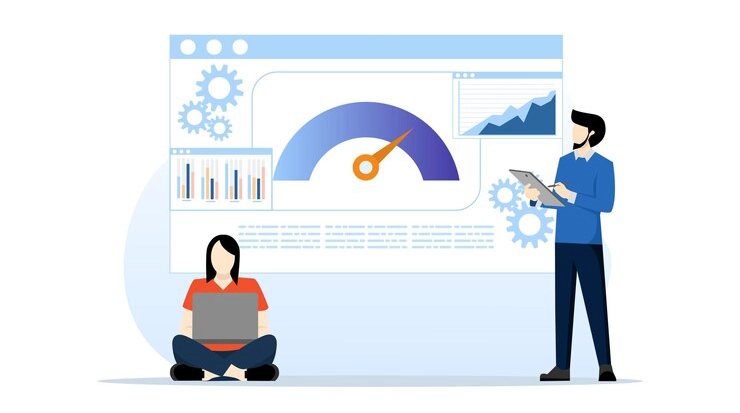content
For years, performance marketers learned to make peace with opacity. Automated systems delivered revenue, but rarely told us how. In 2025, that trade-off is shifting. Google has announced channel-level reporting for Performance Max and broader visibility into search terms and assets (Google). Ads are also moving into new surfaces like AI Overviews and AI Mode, which changes what an “impression” even means (Google; Search Engine Land). At the same time, privacy enforcement is tightening, and regulators from Brussels to Ankara are asking harder questions about how automation affects competition (European Commission; Reuters; Rekabet Kurumu). Put simply: transparency is no longer a nice-to-have. It is becoming part of how we plan budgets, measure incrementality, and explain results to people who sign checks.
If you lead PPC in Europe or the U.S., this is the moment to recalibrate. More visibility is arriving, but it lives inside new paradigms. Some levers you relied on are moving to different campaign types, and consent-driven measurement is quickly turning from “best practice” into “infrastructure.” The aim of this article is to ground you in what changed, what has not, and what to do next.
PMax at the beginning: elegant automation, opaque logic
Performance Max launched as a unifier: one campaign that could reach Search, YouTube, Display, Discover, Gmail, and Maps. The pitch was simple — give the system a goal, creative assets, product feeds, and high-quality signals, and it would find cheap conversions across Google’s inventory. The reality for many practitioners was more complicated. While PMax often performed, it told us little about where or why. Brand demand could get blended with prospecting. YouTube’s view-based lift was mixed into last-click purchase data. Search partners and Display placements were hard to audit. The black box worked, but it was still a black box.

That opacity shaped our playbooks. We learned to run geo splits and holdouts, carve off pure brand campaigns in Search, and jury-rig measurement to approximate the contribution of channels we could not easily isolate. It was functional, but fragile. Everyone asked a version of the same question: “I see the results, but do I understand the machine that produced them?”
PMax today: more windows, still not a glass house
In 2025, Google started opening that box without breaking its core automation. Channel performance reporting now shows how a PMax budget is distributed across Search, YouTube, Display, and other surfaces; search term reporting is expanding; asset-level metrics are improving (Google; Google Support). Advertisers can finally see whether a single campaign is closing on Search or warming audiences with video before a branded click. It is not full transparency, but it is enough to inform budget allocation, creative strategy, and negative lists.
Search themes — the “keyword-like” hints you feed PMax — have also been expanded. Several industry roundups and Google’s own help content confirm the limit has increased for many accounts to 50 themes per asset group (Search Engine Land; Google Support). That does not turn themes into hard targeting, but it gives practitioners a stronger way to steer automation toward the intent pockets they actually care about. In short, PMax is still a black box, but it now has more windows you can look through.
Where it is headed: AI surfaces and brand controls move
The broader search experience is changing. Google is expanding Search and Shopping ads inside AI Overviews and AI Mode on desktop in the U.S., with additional geographies planned (Google; Business Insider; Search Engine Land). For marketers, that means impressions may happen inside an answer rather than a traditional results page. Click-through rates may soften, while the value per visit could rise because the user saw more context before choosing to act. Either way, measurement must adapt.

In parallel, Google is pushing more automation into standard Search. Brand inclusions — the rails that let you include or exclude specific brands — are migrating under AI Max for new Search campaigns (Google Support; Search Engine Land). The control is helpful, but the venue is different. Expect brand management to live less in classic keyword sculpting and more in campaign-level brand rules. Practically, you will likely separate pure brand defense from non-brand growth using these controls, then let broader matching find incremental queries while you monitor the new search term reporting.
Privacy and attribution: consent moves from optional to operational
Transparency is only as good as the data you are allowed to collect. Google’s consent mode v2 is now being enforced more strictly across the EEA; advertisers without compliant consent signaling are experiencing lost conversions, remarketing segments, and optimization signals (Google Support; Termly; industry enforcement notes). If your consent platform and tags are misconfigured, automation is effectively flying blind, because it cannot learn from a meaningful share of your users. The fix is not glamorous — clean CMP setup, correct tag behavior for each consent state, and enhanced conversions or server-side tagging — but it is decisive.
There is also a practical détente around third-party cookies in Chrome. After years of delays and testing, Google signaled a shift away from hard deprecation toward a model that gives users more control while continuing to evolve Privacy Sandbox (Privacy Sandbox; CookieYes). Do not treat this as a free pass. First-party data collection and consent-based attribution still determine how well automated bidding and targeting work. But do note the window for traditional measurement is not closing as abruptly as some feared.
Traffic quality: AI versus invalid clicks and made-for-advertising
Transparency is not only about reports; it is about knowing whether you are paying for human attention. Google says it has expanded the use of large language models to detect and block invalid ad traffic and deceptive serving patterns, citing meaningful reductions in IVT (Google Ads Blog; Search Engine Journal; Search Engine Land). That is encouraging, but vigilance is still required. Industry analyses throughout 2024–2025 show persistent spend leakage into made-for-advertising placements, where engagement is engineered for monetization rather than intent (Marketing Dive). PMax’s new channel reporting and search term visibility help here: you can validate that meaningful volume is coming from the surfaces and queries you actually want, then refine exclusions accordingly.

The takeaway is practical: anti-fraud is improving, but brand safety and placement hygiene remain your job. Keep a living blocklist, review YouTube and Display placements, and watch search partners if your market mix is sensitive to low-quality clicks.
Regulators: pressure that nudges platforms toward clarity
Policy is starting to intersect with media planning. In March 2025, the European Commission sent preliminary findings to Alphabet for likely non-compliance under the Digital Markets Act (European Commission). The specifics are legal, but the direction is simple: gatekeepers must avoid self-preferencing and ensure business users — including advertisers — have fair access and transparency. Meanwhile, Turkey’s competition authority opened a formal probe into Performance Max in June 2025 to examine whether data consolidation and automation practices distort competition or treat advertisers unfairly (Reuters; Rekabet Kurumu). Even if these actions do not mandate product changes immediately, they increase the odds that transparency features roll out more broadly and consistently across markets.
For practitioners, regulatory pressure is not a headline to skim; it is a signal that more auditable reporting and controls are likely. Global platforms rarely maintain country-by-country product forks for long. Expect features born under scrutiny to become defaults.
A practical plan for the next quarter
-
Turn on and institutionalize the new reporting. Add channel-level PMax reporting, search term insights, and asset metrics to weekly reviews; build a simple rubric that says when you shift budget between surfaces, when you promote or pause assets, and when you add negatives (Google; Google Support).
-
Separate brand from non-brand with the tools that now exist. Use brand inclusions and exclusions in AI Max for Search to wall off pure brand defense and keep your PMax and non-brand Search focused on incremental growth (Google Support; Search Engine Land).
-
Rehearse for AI Overviews. Rewrite ad copy and extensions to answer compound queries; stress-test your Shopping feed titles and images for answer-style contexts; set realistic CTR expectations for AI surfaces while watching conversion rate and revenue per session (Google; Business Insider).
-
Close consent gaps. Audit your CMP and tagging behavior for EEA traffic; implement enhanced conversions or server-side tagging; document the expected delta in measured conversions once consent is correct (Google Support; Termly).
-
Tighten inventory quality. Update blocklists, review YouTube and Display placements, and treat suspicious surges in cheap traffic as investigation triggers. Use the new PMax views to validate where spend actually lands (Google Ads Blog; Search Engine Journal).
-
Rediscover experiments. Run geo holdouts or PSA tests to estimate incrementality where AI surfaces blur click-throughs; set time-boxed trials for new PMax structures or asset groups, and predefine the decision criteria.
Risks and opportunities: designing for clarity
The main risk is measurement drift in AI surfaces. If more answers happen upstream of a click, last-click models will under-credit awareness media and over-credit lower-funnel queries. You need controlled tests — geo splits, staggered launches, brand lift — to calibrate your spend. Another risk is misplaced comfort: more PMax visibility can tempt teams to treat directional reports as hard truth. Channel-level views are great, but not a substitute for clean experimental design.
On the opportunity side, the expanded search term insights and search themes limit support healthier structures. Give each asset group a clear role: video-led creative for new audiences, product-led creative for mid-funnel, and highly specific landing pages for bottom-funnel. Use themes to steer intent, not to recreate a keyword account. With brand controls moving under AI Max, formalize a “brand defense” budget and goal, and judge every non-brand tactic by incremental revenue, not blended ROAS. Finally, treat consent and server-side tagging as capacity building: they improve model learning, speed up troubleshooting, and make your team less fragile when platforms change something without asking.
Conclusion: more light, more responsibility
Let’s be honest: PMax started as a magic trick. You poured in assets and budgets and watched conversions appear. The friction was not performance; it was explanation. In 2025, the balance is maturing. The system remains automation-first, but it now offers channel-level reporting, better term visibility, and richer asset diagnostics (Google; Optmyzr). Meanwhile, Search is evolving into AI-assisted answers where ads are integrated into the experience, and brand controls are shifting into AI Max (Google; Search Engine Land). On the policy front, the European Commission’s DMA enforcement and Turkey’s PMax probe signal that transparency is an expectation, not a favor (European Commission; Reuters; Rekabet Kurumu).
So does transparency in PPC truly increase? The pragmatic answer is “enough to act differently.” You still cannot see every wire inside the machine, but you can finally trace budgets to surfaces, connect queries to outcomes, and enforce cleaner brand boundaries. The price of that clarity is operational discipline: consent that actually works, experiments that answer hard questions, and creative systems built for intent rather than formats.
Here is the reflection to end on: if Google gives us windows into the black box, will we build the processes to look through them every week, or will we admire the view and keep flying on autopilot? Transparency is only useful if it changes decisions. Use the new reporting to reassign budgets with intent. Use brand inclusions to keep defense honest. Use consent to feed the model real signals. If you do, automation stops feeling like magic and starts feeling like engineering — and that is exactly where performance marketers do their best work.
Subscribe to our newsletter



